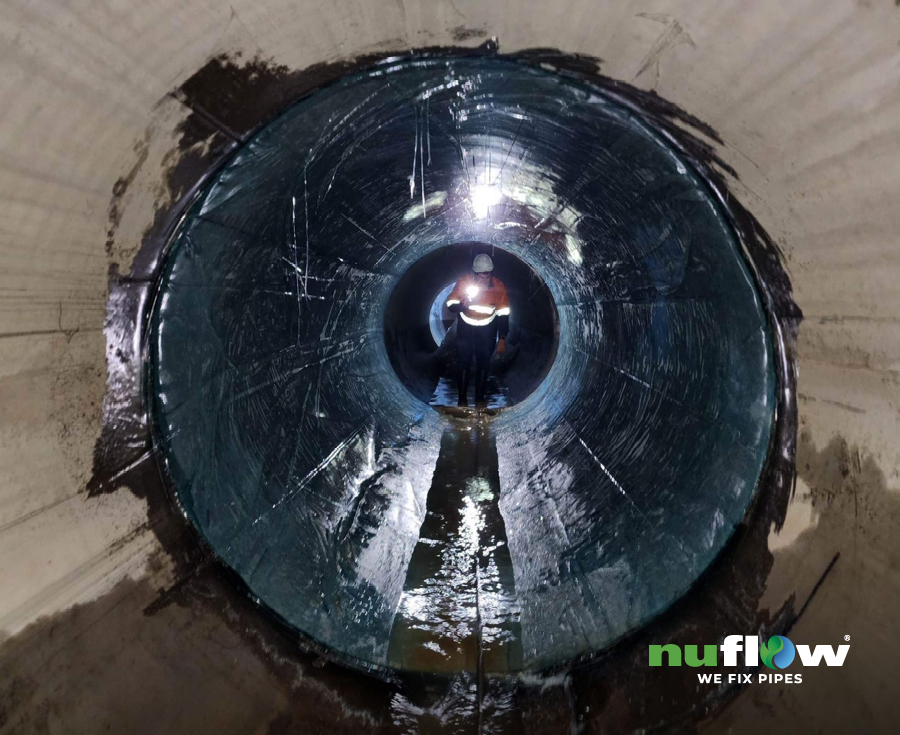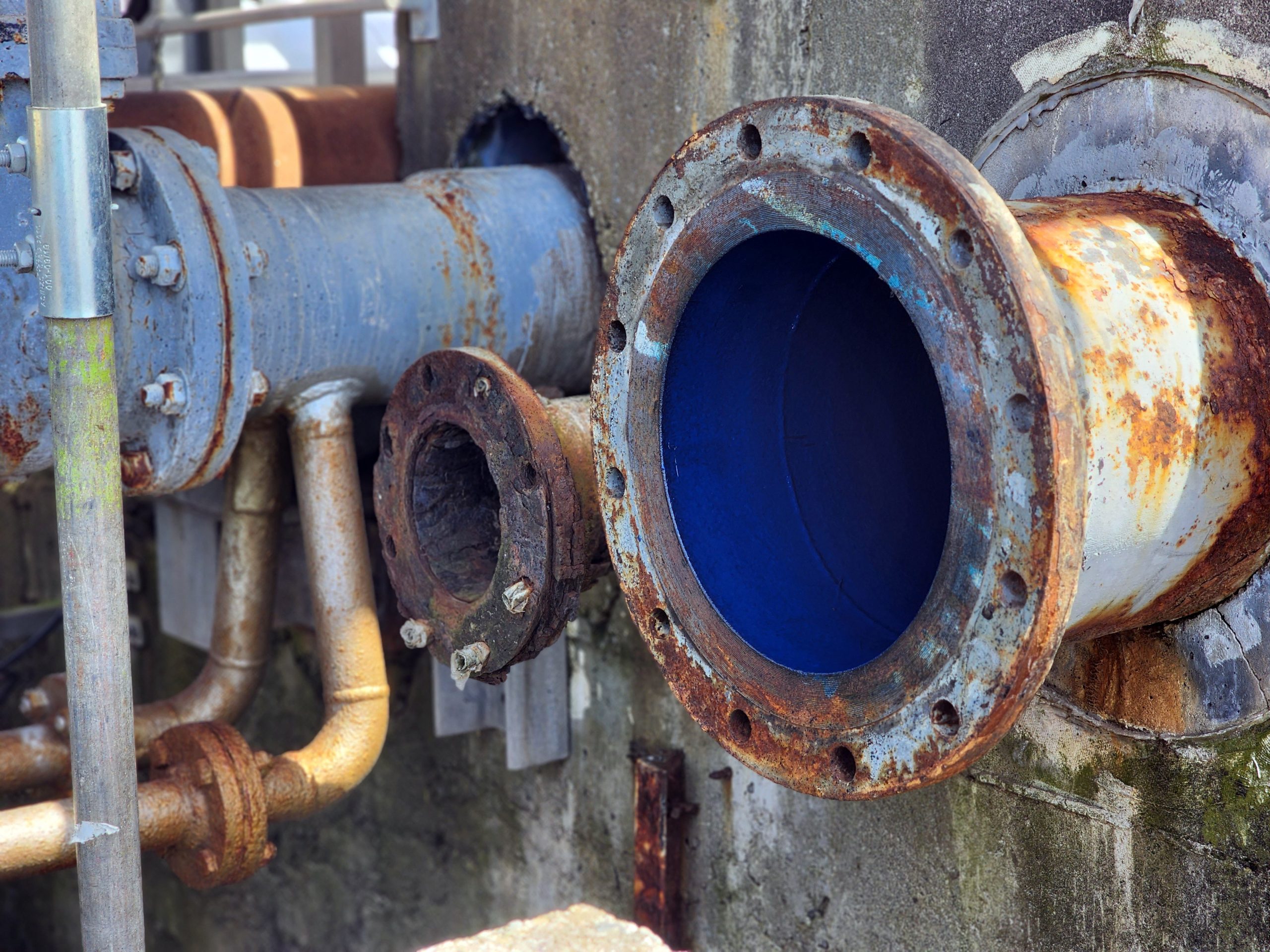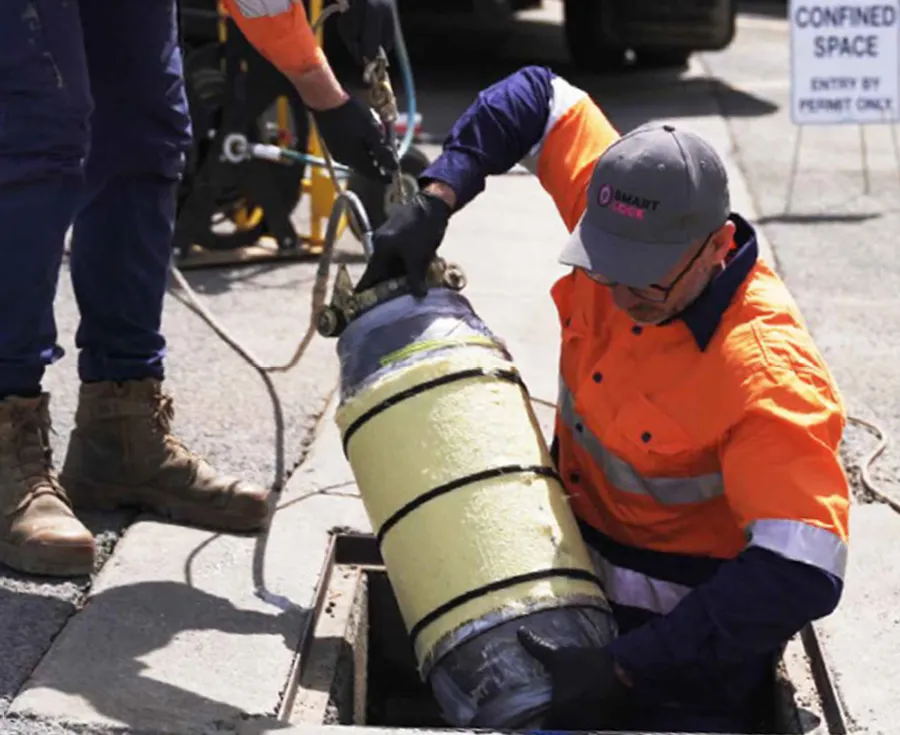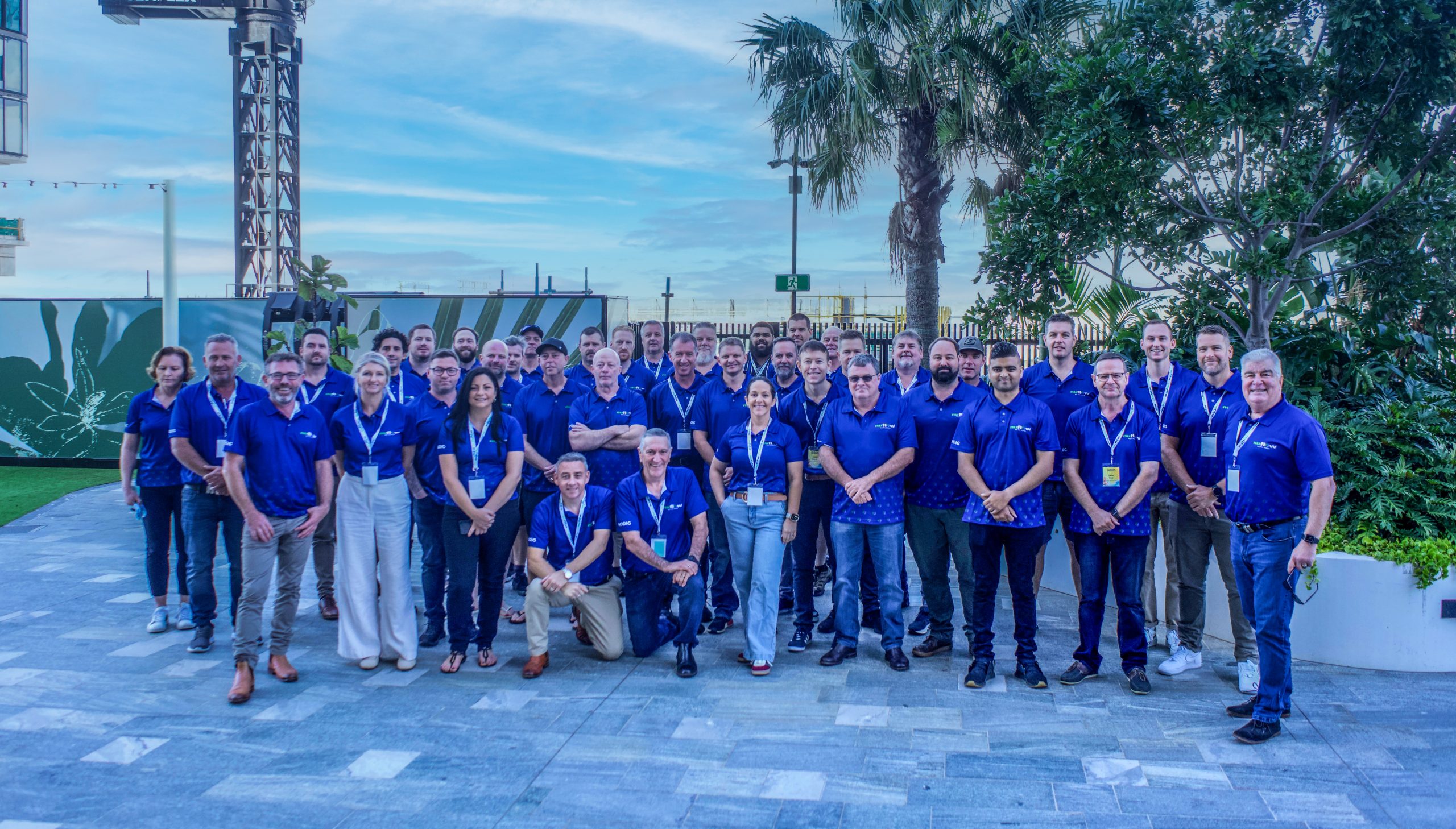It’s important for a residential dwelling’s pipe system to be both safe and durable, particularly when it comes to stormwater drains. These are designed to direct excess water away from a property and to help prevent flood damages, saving both residents and the local council from costly repairs and major.
So, when a cracked stormwater system was discovered in a newly completed housing development in the North Harbour region, the managing construction company knew they needed to rectify the problem quickly. However, with the asset surrounded by newly built infrastructure for the development, they needed a solution that wouldn’t demand its destruction. Fortunately, this is Nuflow’s speciality.
Stormwater cracks risk infrastructure upgrades
Piritahi is a construction company in Auckland that develops land and old subdivisions on behalf of government agency, Kāinga Ora, to provide rental housing for New Zealanders in need.
Recently, Piritahi completed an infrastructure upgrade in the North Harbour region. Before they were able to open the new subdivision, they were required to confirm safety and building compliance for various assets across the project. This included conducting a CCTV inspection and flow report on the reinforced concrete stormwater system which had been installed as part of the upgrade. During the inspection, Piritahi uncovered a crack along a 5m section of the pipe that had occurred after its installation.
The crack meant that the pipe was no longer structurally sound, and was at risk of collapsing if left unaddressed. It also meant that Piritahi couldn’t transfer ownership of to the local water authority until it was fixed. This would prove difficult as the stormwater pipe was located beneath a brand new 12 inch thick concrete walkway with an attached culvert. A lot of work had gone into this walkway, and a replacement would mean destroying everything followed by extensive remedial work, essentially starting all over again. Plus, It was also next to a public access park that would inevitably be impacted by the excavation required to replace the pipe.
Initial remediation plans involving the replacement were predicted to cost over $250,000 and set the project timeline back months. Piritahi wanted to avoid this at all costs, so they looked into possible reline solutions. Having worked with Nuflow North Harbour in the past, they realised they were the best option to reach out to.
Nuflow’s custom solution
When head reliner at Nuflow North Harbour, David, got the request for a structural reline from Piritahi, he knew his team was up to the task. He started by organising a site visit where they inspected access points, reviewed site plans and determined the pipe specifications.
Once he had all the information he needed, David reached out to Head Office and leveraged the expertise of Nuflow’s engineers and technicians to find the best possible solution. They came back with the recommendation for a 20mm, fit-for-purpose Sumoline liner. This is Nuflow’s strongest CIPP relining system and has been specifically designed to structurally repair built infrastructure where load-bearing capacity is critical. They decided that they would reline the pipe in two sections to account for the large size.
As the largest pipe the Nuflow North Harbour team had dealt with, they realised they would need to custom make the liner in order to make it as effective as possible. Once they had confirmed the details, they submitted the price, plans and engineering specs for approval, and started preparing for the stormwater pipe repair.
Unprecedented pipe size calls for problem solving
Once the team got to the location, their first task was to establish the site. This meant determining public barriers and the area they needed for equipment and vehicles. They also needed to construct a shade tent to prep the materials so the resin wouldn’t react to the sun and begin to harden before it was in place. Nuflow is committed to safety and quality, so doing this made sure that the job would be done correctly with as little risk as possible.
The first stage required wetting out the liner with the Sumoline resin. They then had to ‘invert the plastic’, which involves pushing a plastic skin of polypropylene the same size as the pipe into the liner to prevent the resin from sticking to the bladder as it inflates and cures.
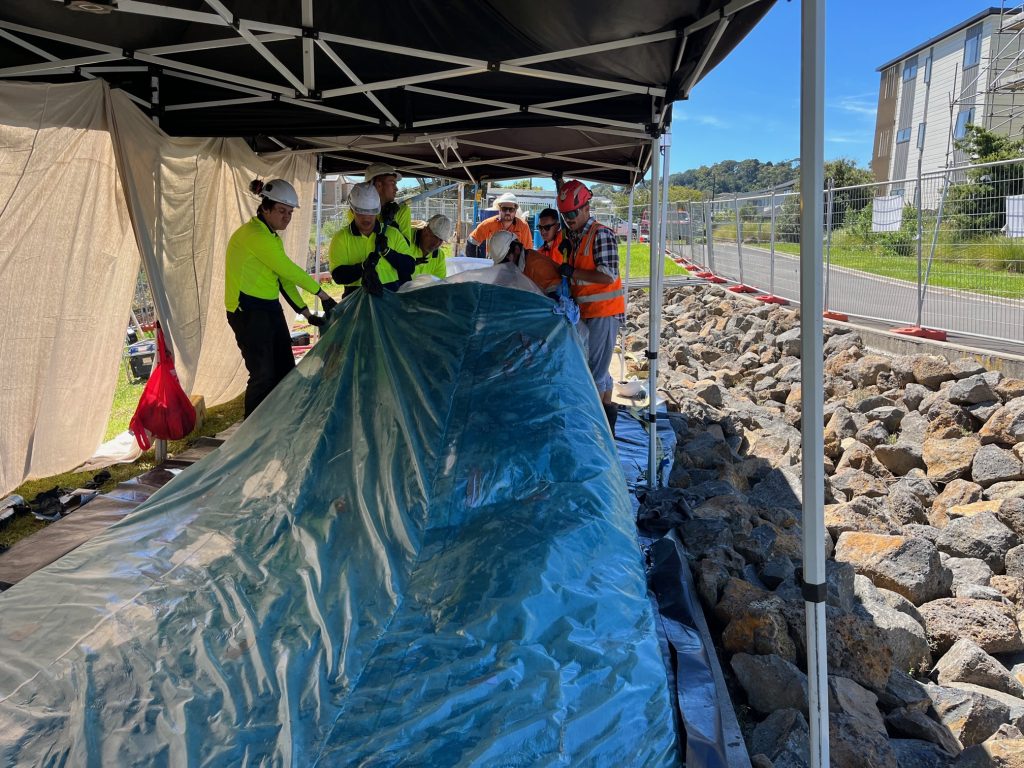
Usually, this is a simple process, with two or three technicians sliding it into the place with the help of an air compressor. However, because the custom liners were 150kg and filled with 300kg of resin, the plastic was meeting resistance and kept pushing out. With these weights more than double the size of the usual liners, the team realised they needed to adapt their process and come up with a better solution.
They decided to strap the compressed air box to the liner, and then strap the liner to the truck. That way, when the compressed air was turned on, the plastic had nowhere to go except inside the liner. This proved successful, and the team could get started on the rest of the relining process.
After clearing the pipe of debris, they got the liner in position. With weight continuing to be a challenge, the team used a capstan winch to lower it into the manhole access point, as well as a reversing vehicle that would carry the weight on the other end as it lowered. Not only did this solve the problem of its size and mass, it made it easy to reposition the placement of the liner if they needed to.
Once in place, the bladder was inflated and left to cure for 36hours before the liner was pulled out and the process was repeated. Through what they learnt on day one, they were able to cut four hours off the preparation process and get it installed into the pipe much faster. Once again it was left to cure and pulled out after another 36 hours. The whole relining process only took four days, and left behind a structurally repaired asset that was stronger than ever.
A fast, effective and safe pipe relining solution
The Nuflow North Harbour team finished in four days what would have taken up to six weeks with a full replacement. All of this was done without having to touch the newly installed infrastructure, saving wasted recourses, unnecessary costs and impacts to the environment. Even the nearby public park could stay open as normal.
Piritahi was very impressed with their work, and even commented on how well the team worked together. They were also grateful that all safety procedures and methodologies were adhered to, given the potential risks from the heavy materials.
After Nuflow North Harbour’s expert work, the asset was suitable for transfer to the council and Kāinga Ora were able to start leasing out homes to those who need it.
Ask Nuflow about your pipe relining solutions
If you’re tossing up the merit of pipe relining vs replacement, this project should prove the benefits of the former. Don’t suffer from damaged infrastructure or unnecessary excavation. You can structurally repair your pipes in no time when you reach out to Nuflow for help. Contact us today.

